A natural garden reflects the natural landscape that surrounds it, whether it's the prairies of the Midwest, the forests of New England, the fields of wildflowers in Texas or the starkly beautiful deserts of the Southwest. Natural gardens aren't formal; instead they feature free-form plantings and soft edges. Pathways meander through the space, sitting spots appear unexpectedly and havens are provided for birds and animals.
Natural landscapes can be easy to maintain; you needn't worry about letting plants grow as they wish, and weeds may turn into valuable garden assets. However, it can be easy to let these landscapes get out of hand. If you want to reflect the landscape rather than let it take over your yard, you'll still need to do some trimming and cutting back. It will just be a lot less work than with a formal garden.
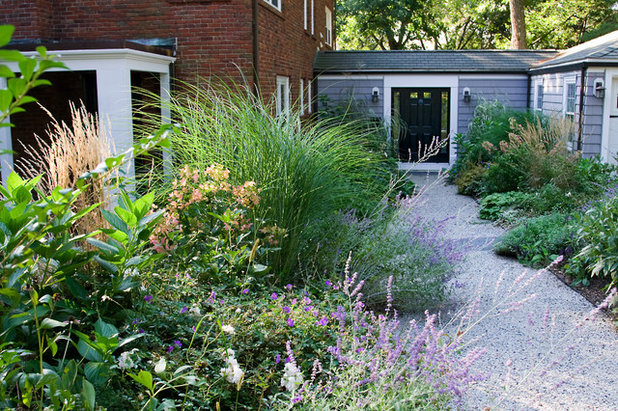
Matthew Cunningham Landscape Design LLC
A side yard filled with grasses, annuals, perennials and shrubs softens the rigid lines of the house. A gravel path is less formal and more naturelike than brick or flagstone.
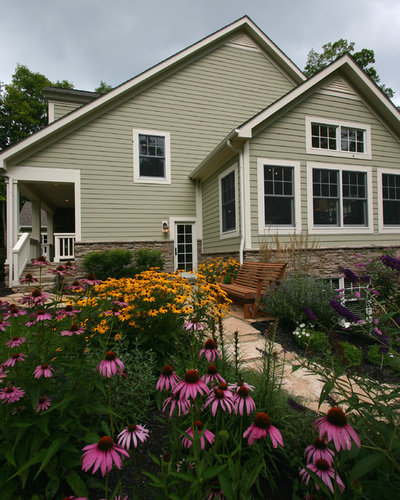
RTA Studio Residential Architects
It's the return of the prairie as coneflowers and black-eyed Susans fill an Ohio yard. These native Midwest perennials blend perfectly with other favorite perennials and shrubs and will spread, though not too quickly, for an easy-care yet colorful garden. As a bonus, they ensure the space will be filled with birds, butterflies and bees all summer long.
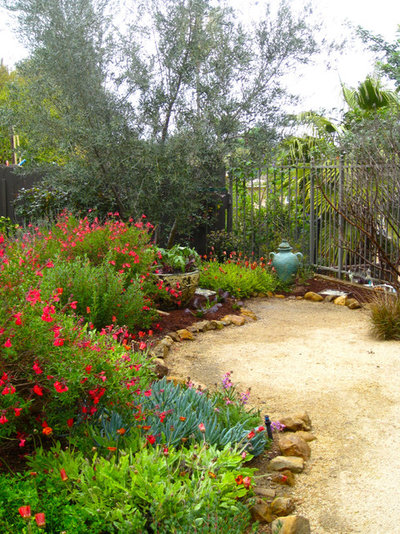
Shirley Bovshow
Native plants mix with Mediterranean imports in a Central California garden. Since both thrive in the same conditions, they work well together; most people would be hard pressed to know which is which. The result is an easy-care garden that's colorful without demanding too much water. The color of the decomposed granite pathway echoes the colors of the trails in the surrounding hills.
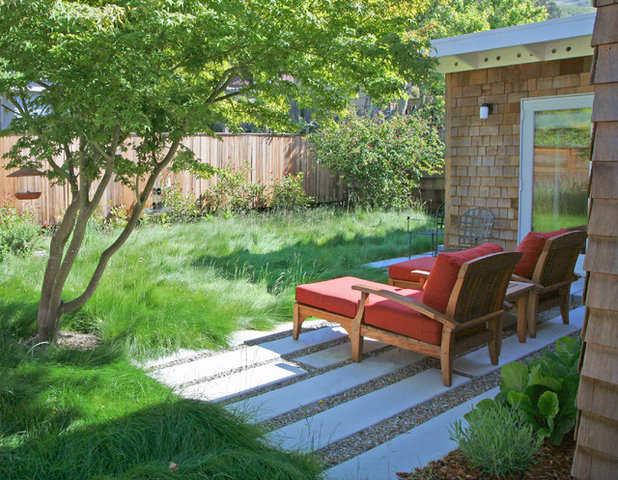
Shades Of Green Landscape Architecture
You may not have a large yard, but that doesn't mean you can't have a meadow view. No-mow and low-mow grasses are designed to clump softly in waves, like those found in a wide expanse of open grasses, though I've heard them described as looking like the ocean or hair. Think four times a year rather than two times a week for mowing, and these grasses are generally drought tolerant. Low maintenance and natural — what's not to love?
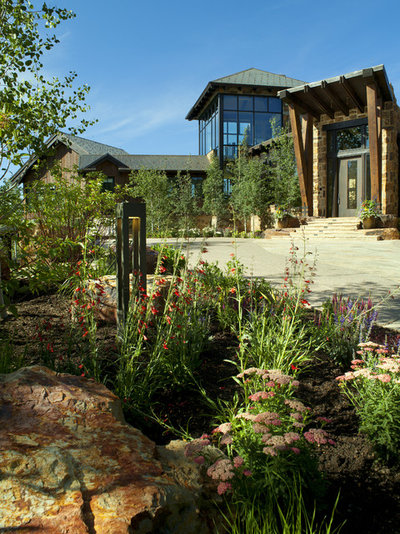
At the edge of a Colorado mountain garden, penstemons and sedums take center stage. In the higher mountain elevations, plants are tucked into the available soil, usually between rocks and trees, rather than being densely packed like in the more open prairie spaces. This landscape follows the same approach. The garden blends into the scenery, rather than competing with it.
Tip: Plant more formal and nonnative plants near the house, as was done here, and use the natives on the garden edges as a transition to the natural landscape beyond.
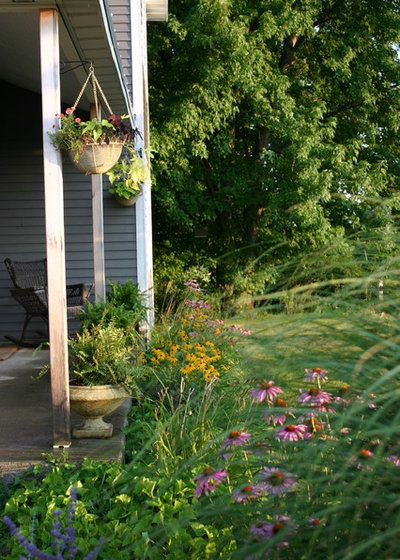
Rebekah Zaveloff | KitchenLab
Where a traditional garden plan would feature neatly arranged plants grouped by height in the bed next to the porch, this Michigan garden blends an array of plants and grasses in an equally mixed array of sizes that works perfectly with a farmhouse-style home.
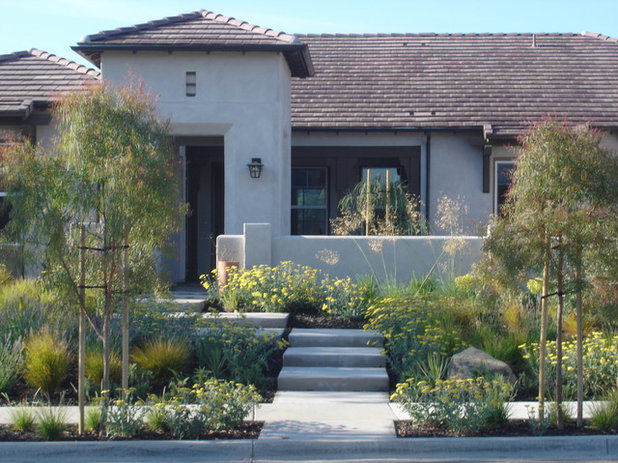
Jeffrey Gordon Smith Landscape Architecture
A Southwestern-style house is matched with a Southwestern-style garden. The plants fit perfectly with the house style as well as with the gardening conditions. A typical front lawn would be less effective visually, plus a lot more work.
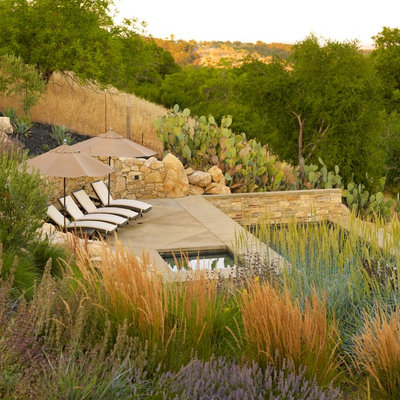
Jeffrey Gordon Smith Landscape Architecture
There's more nature than yard in this Wine Country garden. The space takes advantage of the view, whether someone is relaxing, soaking or swimming. At the same time, since it's set into the hillside and has stonework that matches the surrounding landscape, you might not even notice it until you are right on top of it.
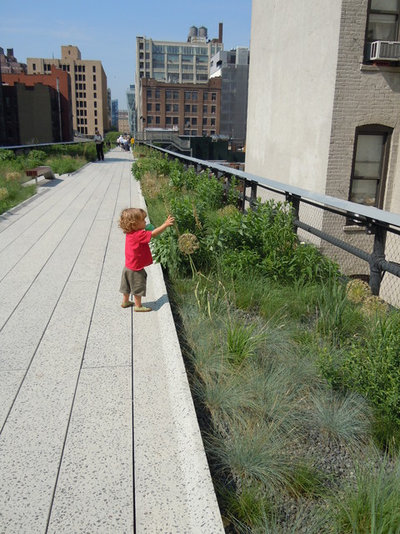
Natalie Myers
The High Line, a converted elevated railroad track in New York City, is planted with natives along the walkway. The result is an easy-care space, but it was achieved after carefully considering plant placement so the plants would grow naturally yet not overrun the beds and the walkway.
Tip: Adding a planting bed in front of a potentially dangerous edge, such as the fence line here, and then planting it solidly, helps create a subtle physical barrier. You may not have a drop-off, but the same idea would work along the edge of the yard, encouraging people to use the pathways rather than tromp across the lawn.
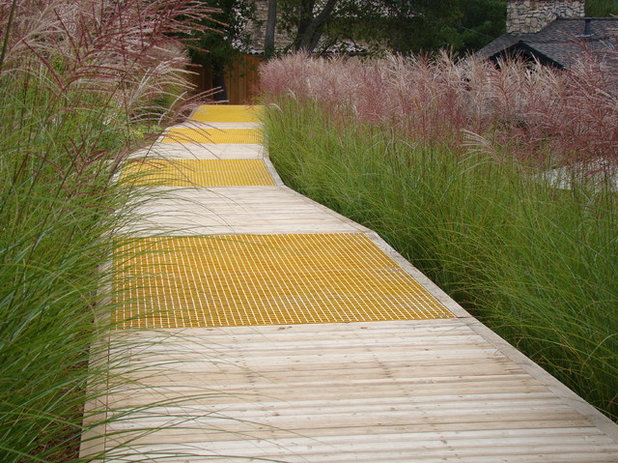
Randy Thueme Design Inc. - Landscape Architecture
A mass planting of grasses flanking an unusual walkway fills a long space. It reminds me of walking down to the beach, but with a far more interesting boardwalk than you'll find at most public parks.
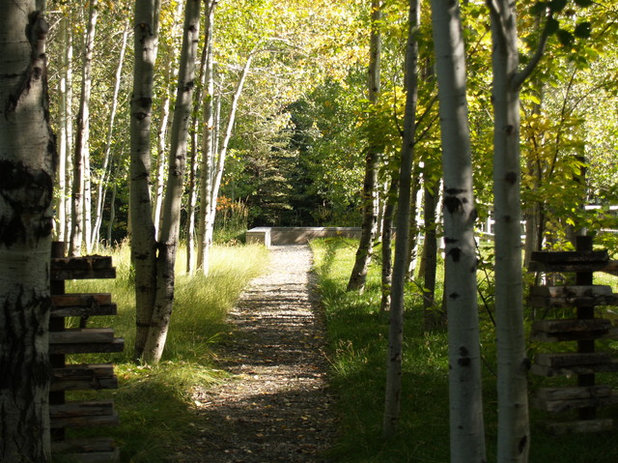
Randy Thueme Design Inc. - Landscape Architecture
A gentle path through trees and grasses leads to a sitting spot. It's about as simple as it can be, yet it's highly effective.
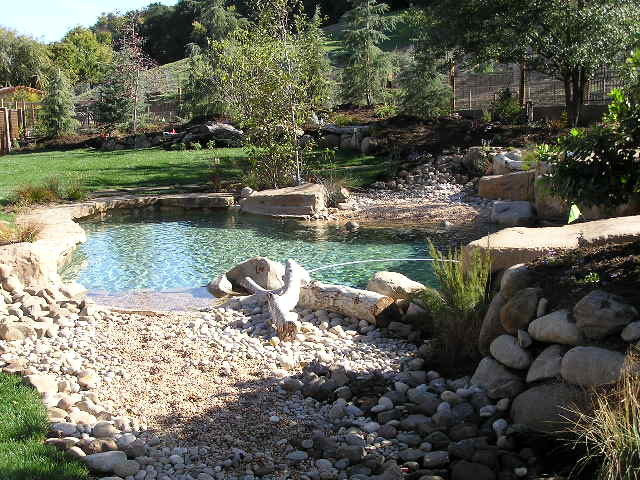
Gates & Croft Horticultural Design
A water feature is always welcome in any garden. Keep it feeling natural by landscaping the edges to replicate what you'd find outside the garden confines. Instead of a necklace of matched stones around the entire pool that's a single depth, create a beach at one end and slope the sides down from the edge (also good for helping pets escape the water if they're not pond savvy; not so good for keeping other critters out). Very large, flat stones of varying heights provide places to sit and keep the edges from appearing too regimented.
Tip: Build a bit of a raised bed or a mound to one side of the pond. Water flows to the lowest spot, so a small rise will help make the pool look like it was meant to be there.
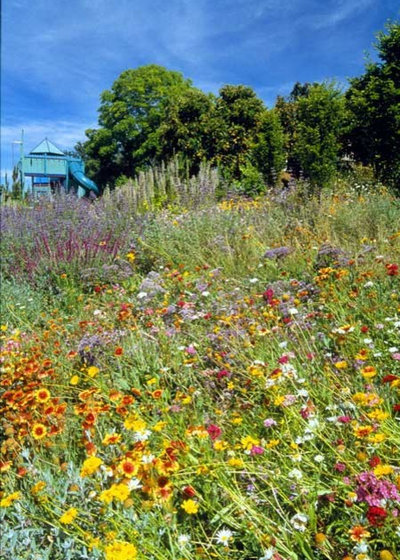
Ron Herman Landscape Architect
A field of wildflowers is perhaps the epitome of a natural garden. They can be overpowering next to the house, but if you have a large estate, a difficult-to-landscape hillside or simply a large empty lot in your sight line, consider sprinkling some seeds and seeing what comes up.
Tip: When planting a large number of perennials, annuals or bulbs, scatter the seeds in drifts to mimic how they grow in nature.
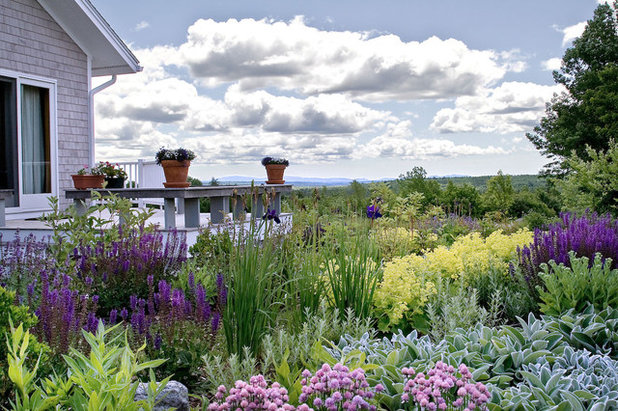
Matthew Cunningham Landscape Design LLC
If you have room to spare, take a cue from this beautiful example and blend your garden with the surrounding landscape. In this Maine garden, the goal was to renew the native plant community and remove much of the expanse of lawn. The lawn is still there, but it's not the main focus. Instead, it blends into the space, and the perennials and shrubs, along with the natural grasses, take center stage.
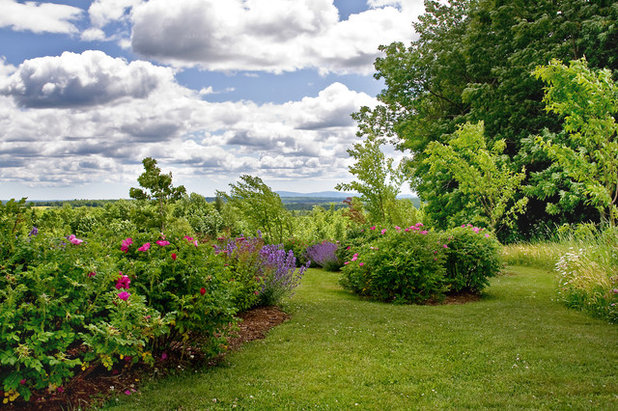
Matthew Cunningham Landscape Design LLC
The garden's edge is gradual. Instead of an abrupt end of lawn, casually (but thoughtfully) placed shrubs signal the boundaries of the garden.
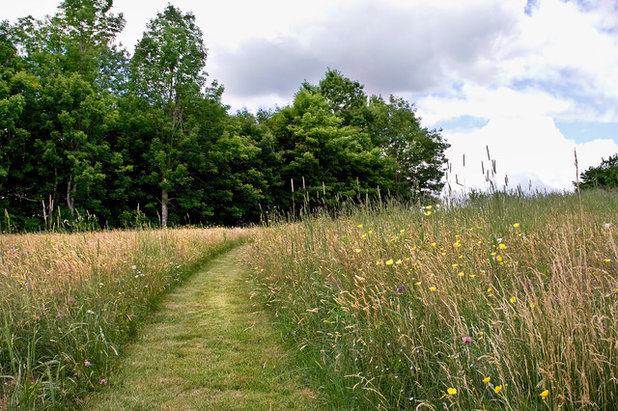
Matthew Cunningham Landscape Design LLC
A path through this meadow allows access without interrupting the view of the grasses.
See more of this home and landscape
More Lay of the Landscape:Traditional Garden Design





